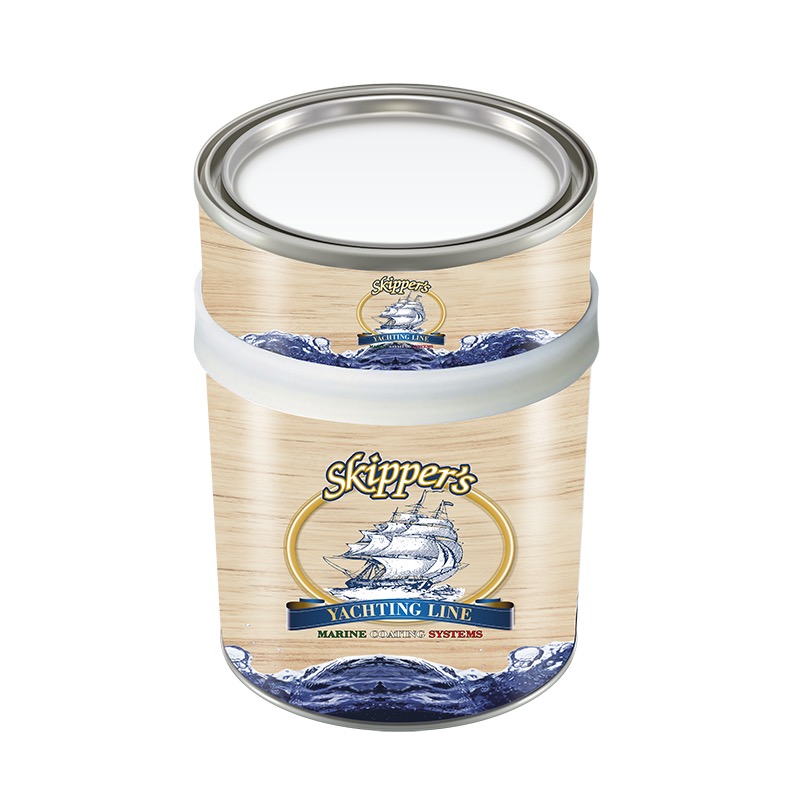

Fast drying, clear wood varnish allowing quick varnishing process. When thinned 50-100% (depending on the absorption of the wood) with Thinner 203 it can be used as a wood basecoat in polyurethane coating systems. It can be polished with abrasive and polishing products if left as a finish. Widely used as a clear basecoat in Riva's Acquarama coating systems.
SURFACE PREPARATION AND APPLICATION PROCEDURE
Bare or restored Wood.
- In order to obtain “closed-pore” smooth surface, apply two coats of POLIGLASS varnish diluted up to 50-100% with Thinner 203 (according to wood absorption). If the pore on the wood is coarse, a third coat, less diluted, may be required. Let dry for 8-10 hours, sand with fine abrasive-paper and apply 2-3 coats of two-component finish (e.g. SPACE CLEAR UV or ACRIGLASS UV).
- On the other hand, if a surface with “open-pore” is desired, apply a single coat of POLIGLASS thinned 50-100% with Thinner 203, (according wood absorption). Let dry for 8-10 hours, sand with fine abrasive-paper and apply 2-3 coats of two-component finish (e.g. SPACE CLEAR UV or ACRIGLASS UV).
Previously Varnished Wood. Sandpaper the old varnish thoroughly and remove dust. If the old paint system was made with two-component polyurethane varnish, just overcoat with 2-3 coats of POLIGLASS varnish allowing 8-10 hours between coats. If the old paint system is unknown it is recommended to test the new varnish on a small area to check if POLIGLASS is compatible with the old varnish and to make sure that the old coating is still in sound condition and does not soften when overcoated; if there will be no inconvenient apply 2-3 coats of POLIGLASS varnish. In the case of loose, powdery or non-compatible old varnish, it is recommended that the old varnish should be stripped completely down to bare wood with a paint-remover or by scraping and sandpapering. Once back to bare wood follow the recommended coating system as indicated above for new wood.
NOTE_The recommended number of coats for each varnish is only indicative; the number of coats effectively required mostly depends by wood absorption. For bare new wood we recommend the application of at least 10 coats in total of Poliglass and topcoat varnish. For the restoration of old varnishes brought back to bare wood, the application of at least 6-8 coats is recommended. For particularly important works please contact our technical service.
| Paint Type | Two components |
| Binder type A | Poliurethane |
| Binder type B | Isocyanates |
| Code & colour A | 5X0000 |
| Code & colour B | 8ZGLAS |
| Specific gravity kg/lt (±0,05) | 1.050 (A) - 1.010 (B) |
| Solids content (volume) ±2 | 45% |
| Shelf life +23°C (±2) | 24 months in unopened cans |
| Viscosity Ford (Ø4 a 20°C) | 45-50 sec. |
| Application | Brush-Roller-Spray |
| Mixing ratio A+B by volume | 2 parts Sol.A with 1 Sol.B |
| Pot life A+B (20°C) | use within 4 hours |
| Temperature Pot Life | 20°C |
| Brush-Roller | 10-15% Thinner 205 |
| As a primer on bare wood* | 50-100% as required |
| Spray | 10-20% Thinner 203 |
| Dust dry | 15-20 minutes (20c) |
| Recoat time | 8-10 h (20°c) |
| Application temperature | Between +10 C and +40 C |
| Relevant humidity | Less than 80% |
| Dry film thickness advised | 50 microns per coat |
| Theoret. coverage m2/Lt | 10 |
Colors: LUCIDA
Color code: 5X0000
Before starting paint application please carefully read all the safety precautions indicated on the label of each can or in the product safety data sheet available on request. For further information please do not hesitate to contact our technical staff.
The above information is given to the best of our current knowledge, however, because the conditions of use of our products are beyond our control, no warranty is given or to be implied in respect of such information. Our technical staff can be contacted to study customer's specific requirements involving our products in order to enable their most effective use. Dilution rates and drying times must be considered only indicative, mainly related to a temperature of 20 ° C (68°F) and may vary according to prevailing temperature, in presence of particular weather conditions or depending on application procedures.